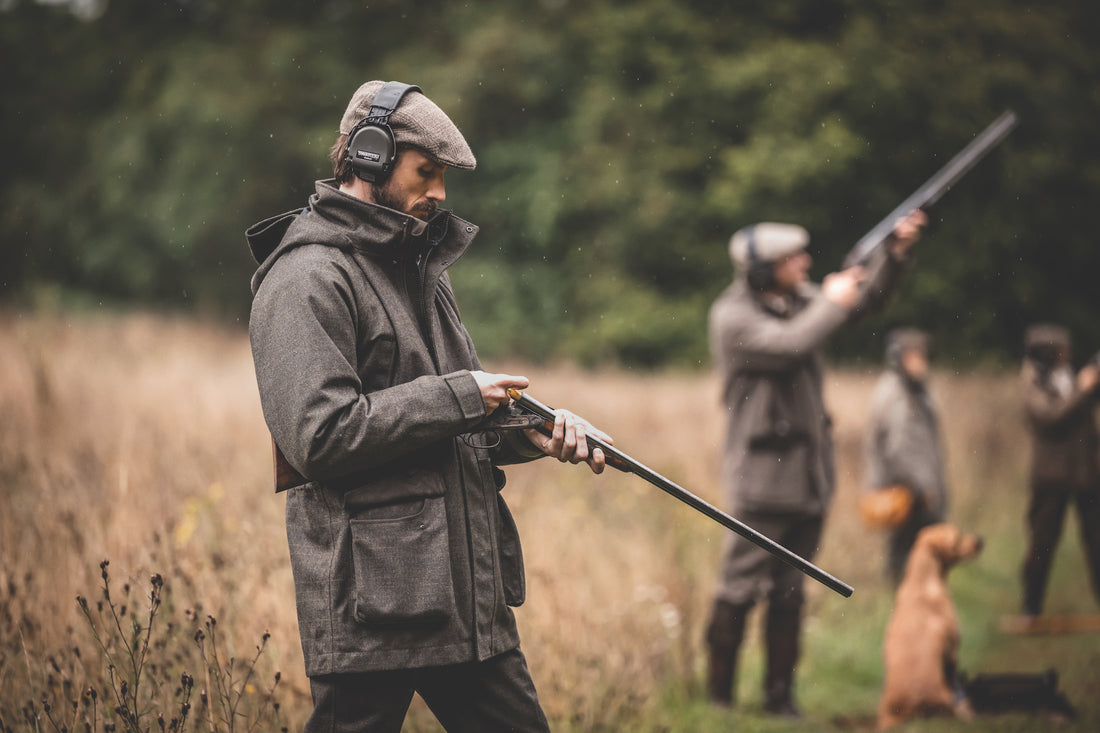Whether you're happiest on the grouse moors, or prefer the challenge of shooting high pheasants, January always makes for a good time to take stock and think about how you'll be upping your game for the year ahead.
Here at Purdey, our attention turns to celebrating the successes, applauding the gamekeepers, enjoying one final blast at a favourite estate, then packing away the technical tweeds and booking in for that all-important gun service to ensure they will be in pristine condition ready to be stored away until the start of next season. (Find out more about Purdey servicing offers, and book in here.)
“I get all of my tweed shooting suits and field coats dry cleaned at the end of every season,” Annika Purdey reminds us, while recommending that much of your regular attire can be kept in rotation. “I definitely still wear the shirts and cashmere all year round, mixed in with my regular wardrobe staples. It’s really only the technical kit such as breeks, field coats, gilets, shooting vests, that I put away.”
Between seasons, shooting estates will also be taking stock, looking at their landscape maintenance and improvements, rearing young birds and doing dedicated conservation work – the likes of which we’ll be honouring in the Purdey Awards come February – to guarantee even greater rewards once the new season resumes. It’s a good time of year to think about honing your technique too, keeping your eye in with a tuition session at Purdey at the Royal Berkshire, or heading out to shoot a few clays.

But, ahead of all that, we still have a few weekends left to get out in the field. It’s a great month to tackle the highest of birds, a speciality of keen shot Jonathan Irby. Irby has worked in the shooting world for nearly 20 years, during which time he’s nurtured a deep love for the sport – as well as helped out many keen shooters.
“The greatest challenge when shooting high birds is to read the line correctly,” he tells us. “Very often a pheasant is gliding by the time it has reached the line of guns – meaning that it looks slow, but is in fact very fast; especially if dropping from a height. When a bird is gliding, it is much more likely that it is ‘sliding’ to one side, compared to when it’s under power (ie. with wings flapping), when its line will be more predictable and direct.”
Irby’s best advice in this scenario? “Focus on footwork. Make sure you have set your feet such that you are ready for where you will be taking the shot, rather than where you will be mounting the gun. Then, work to turn your hands and shoulders so that your mount and swing follows the line of the bird, rather than chopping across its line. Finally, when shooting high birds, be prepared to make big changes. So often I see people miss a number of birds in a row, and yet they have not made a bold brave change to their lead or line. Instead, they do the same thing and wonder why it isn’t working.”
With that in mind, here’s hoping for a bold and brave end to the shooting season, and taking that same spirit forward into the year ahead.
